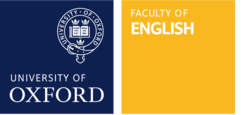Diseases of Modern Life Resources
The new 9-1 GCSE specifications set great store by nineteenth-century writings, both in the literature and language papers of all specifications. This poses a particular problem to today’s GCSE candidates who are increasingly distanced from the socio-cultural norms of the nineteenth-century, not to mention the idiosyncrasies of Victorian modes of expression!
It is not hard to find plentiful examples of nineteenth-century fiction to use as extracts in the classroom, but what about non-fiction? AQA – the most popular specification among schools – has an unseen 19th century literary non-fiction extract as part of Paper 2 (the exam which constitutes 50% of the qualification as a whole). Having worked as a teacher of English myself, I know well the struggle to find examples from real texts that can be immediately used in the classroom.
The AQA specification states that:
The sources for the reading questions will be non-fiction and literary non-fiction texts. They will be drawn from the 19th century, and either the 20th or 21st century depending on the time period assessed in Paper 1 in each particular series. The combination selected will always provide students with an opportunity to consider viewpoints and perspectives over time. Choice of genre will include high quality journalism, articles, reports, essays, travel writing, accounts, sketches, letters, diaries, autobiography and biographical passages or other appropriate non-fiction and literary non-fiction forms.
Victorian Light Night
Below is a video of a live projection using the themes of the Diseases of Modern Life project. It’s a great way to intrigue and interest your students in Victorian scientific and medical culture:
https://www.youtube.com/embed/uoYPOK6V7J8?rel=0
(c) Ross Ashton & Karen Monid - The Projection Studio
To help teachers, we here provide a range of sample texts from primary sources which fit within our research project’s themes. All of them are taken from the database we will eventually make available online, so teachers can also have access to further ideas as to nineteenth-century periodicals. The extracts we offer are formatted (as far as possible) as they would appear in an AQA exam script: in 11pt Arial font, with a brief introduction to the source and a glossary of vocabulary students couldn’t be expected to know.
We only provide ‘Source B’ (the 19th century literary non-fiction) because this is where our research aligns with the needs of the classroom, and because we envisage these extracts as a way of getting students more familiar with reading nineteenth-century non-fiction. However, they are on topics (such as exercise, hygiene etc.) where modern accompanying texts could easily be found to pair a Source A with our Source B.
These resources are designed to be used with students from National Curriculum Year 9 onwards, to help them prepare for the unseen 19th century literary non-fiction extracts they’ll see on their exam papers. They aim specifically to help the following:
- to increase students’ reading speed when reading 19th century non-fiction: the whole Paper 2 exam lasts 1 hour 45 minutes, with only 15 minutes of that time recommended for reading the sources. Therefore, the quicker students can read and understand 19th century non-fiction, the more time they can spend formulating strong answers
- to allow students to practice the skills tested by Assessment Objective 2, which can fall by the wayside when students are busy just trying to understand the gist of the text:
AO2: Explain, comment on and analyse how writers use language and structure to achieve effects and influence readers, using relevant subject terminology to support their views
AO2 is the highest weighted assessment objective for reading across the entire English GCSE, so these skills would benefit the student holistically. With these sample texts being from unknown authors, students have to focus just on the language used.
We welcome feedback to tailor this to the most useful version to overstretched teachers in the classroom. Please email any enquiries to catherine.charlwood@cantab.net
To learn more about the Diseases of Modern Life project, please visit our website. We can be found on twitter @diseasesmodlife

Resources to download
AQA 19th Century Texts:
Death and Disease - Shop Assistants



